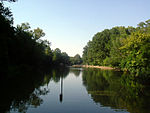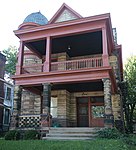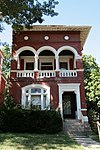Good Samaritan Hospital (Cincinnati)
1852 establishments in OhioAmerican Civil War hospitalsCincinnati in the American Civil WarGreater Cincinnati Consortium of Colleges and UniversitiesHospitals established in 1852 ... and 2 more
Hospitals in CincinnatiRobert Mills buildings

Good Samaritan Hospital, the oldest and largest private teaching and specialty health care facility in Cincinnati, Ohio, United States, was opened in 1852 under the sponsorship of the Sisters of Charity. The hospital is member of TriHealth, a joint operating agreement between Catholic Health Initiatives and Bethesda, Inc. Cincinnati to manage Good Samaritan.
Excerpt from the Wikipedia article Good Samaritan Hospital (Cincinnati) (License: CC BY-SA 3.0, Authors, Images).Good Samaritan Hospital (Cincinnati)
Dixmyth Avenue, Cincinnati Clifton
Geographical coordinates (GPS) Address Phone number Website External links Nearby Places Show on map
Geographical coordinates (GPS)
| Latitude | Longitude |
|---|---|
| N 39.139913 ° | E -84.521643 ° |
Address
Good Samaritan Hospital
Dixmyth Avenue 375
45220 Cincinnati, Clifton
Ohio, United States
Open on Google Maps










